William Carl Ketcherside
1908-1989
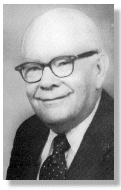
![]()
The Life Of Carl Ketcherside
W. Carl Ketcherside was born May 10, 1908 in Cantwell, Missouri. Baptized at the age of twelve, he began preaching very soon thereafter. By the age of 13 he was already engaged in gospel meeting efforts. He had a great love for books and was almost completely self-educated. He attended a business school for two years, but did not attend college.
At the age of nineteen he moved to Flat River, Missouri, and very soon thereafter met and married his wife of sixty years, Nellie Watts. Together they had two children, a son Jerry, and a daughter Sue Ketcherside Burton.
As early as 1943 he involved himself in radio evangelism in St. Louis, Missouri. For a number of years he conducted a thirty minute radio program called, "The Church of Christ Hour," that appeared on Sunday afternoons. This program was a great success bringing in as many as 400 letters per month. One month he received 468 pieces of mail for this broadcast. A number of the lessons produced for radio were included in numerous books. Some of the titles were, "The Bible Versus False Theories," "Proven Proverbs," "Storm Clouds Over America," "Happy Homes," "Actions in Acts," and many more.
Carl loved reading, but was best known for his writing. He wrote thirty-four books on various biblical topics. For thirty-seven years he was editor of a magazine entitled, Mission Messenger. Initially it was called, Missouri Mission Messenger, a news magazine intended to keep the Christians in the state informed on church activities. However, so many subscriptions came in from other states, that "Missouri" was dropped. The readership of the magazine at its highest production experienced over 8000 subscriptions. In 1945 he began publishing and distributing books. That year E.M. Zerr's book, "New Testament Questions" was published. It was followed by a compilation of some of the writings of W.G. Roberts in a book entitled, "Lessons From Yesterday." In 1946 he published the Bible Commentary by E.M. Zerr, a huge financial undertaking, at the cost of almost $35,000 to produce.
In 1947, Carl and Nell made their first trip to Great Britain. They fellowshipping among numerous congregations of churches of Christ throughout both England and Scotland. Their two month visit between February and April, among the people of the island nations, were some of their most memorable, and enjoyable of their lives.
As his association at this point in his life was primarily among mutual ministry churches of Christ, Ketcherside's efforts to educate Christians was done through local congregations as an alternative to Christian colleges. In St. Louis in the late 1940s he taught in free schools held among the churches with good results. Under the heading of "Bible Study," people would come from various states to study at the feet of this great church leader in St. Louis for about six weeks out of the year. In January of 1948 there were 85 students enrolled in his classes. During the 1949 "Bible Study" there were students representing ten states in attendance. One of the guest teachers was Albert Winstanley, visiting from Great Britain. The schools continued for a number of years, usually during the last few weeks of the year. Other "Bible Study" schools were conducted for shorter terms in Canada, Texas, Arkansas, and other locations.
The life and ministry of Carl Ketcherside might best be described as controversial. Throughout his life he was known to hold to extreme positions and beliefs on various Biblical topics. In his formitable years, he was influenced greatly by the preaching of Daniel Sommer. The hard-lined editor of the Octographic Review, a.k.a. American Christian Review, Sommer was a strong opponent to what was referred to by many as "the digressives." In addition to the Missionary Societies and the use of Instrumental Music in worship, Sommer took stands against the idea of located preachers, supporting Christian Colleges and Orphan Homes from the church treasury. In later years when Sommer's views and hard-line approach softened, Ketcherside grew more stern. His views often led him to participate upon the polemic platform debating various issues with other preachers from within churches of Christ. Ketcherside became the most passionate proponent of what is referred to as "anti-ism" among churches of Christ. Numerous debates were held with preachers such as Rue Porter in 1936 on the subject of institutionalism; G.C. Brewer in the winter of 1946 over the Christian College issue; Burton Barber on the subject of instrumental music, in Ottumwa, Iowa, October, 1948; G.K. Wallace at Paragould, Arkansas on the subjects of located preachers and supporting Christian Colleges, in June, 1952. The Paragould debate was referred to as "The Cow Pasture Debate," as there was no hall big enough to contain the crowd, a tent was erected in a field about five miles north of town. Then in November, 1954 he debated G.K. Wallace again in Saint Louis. Then in December he met Flavil L. Colley in a debate in Dallas over the question of located ministers.
The date of March 27, 1951 was of particular importance to W. Carl Ketcherside. A few weeks previous he had answered calls from brethren in Ireland to come and help them in their work. Early on this day, he, with a number of brethren from Belfast, had boarded buses and traveled to Ahorey, the boyhood home of Alexander Campbell. The old Presbyterian church where his father, Thomas had preached in 1798, was still being used by the Presbyterians. Permission had been sought and given for Ketcherside and the brethren to conduct a worship service there. Upon entering the old church building he noted a bronze plaque showing the face of Thomas Campbell with the inscription, Prophet of Union. His text was taken from Ephesians 2:14, "For He is our peace who hath made both one, and hath broken down the middle wall of partition between us." He felt that his reading and discussion was more addressed to himself than to his hearers. He continued the rest of the day repeating in his mind the words, "For He is our peace." Later that evening, after returning to Belfast with the brethren, he had left the home of some of the Christians, having eaten supper with them. He began walking for two miles through a strong snow storm toward where he was staying. He said had never felt more alone in the world. He continued during his walk thinking about the events of the day, and the work of Thomas and Alexander Campbell to restore the unity to all believers. He did not sleep all night, soul-searching about what he termed, his "sectarian spirit." The following morning he began reading the book of Revelation. When he got to Revelation, and the words of the Lord to the church at Laodicia, the words sunk deeply into him. He read, "For you said, I am rich, I have prospered, and I need nothing, not realizing that you are wretched, pitiable, poor, blind, and naked," v.17, and felt that he had been of this mindset in his life and ministry. Then he read the words of Jesus, "Behold I stand at the door and knock. If anyone hears my voice and opens the door, I will come into him and eat with him and him with me," v.20. At that moment, the forty-three year old preacher did something he said he had never done. He asked Jesus into his heart. And from that moment on he held to a completely different approach to life, to worship, to Christianity, and to ministry.
Upon returning to the United States there were still efforts being made to defend positions he had held for so long. As mentioned above there were other debates he held during that next couple of years. However between 1954 and 1957 changes began to take place that little by little caused brethren to see a difference in Carl's way of thinking. Being so moved and overwhelmed at the memories of his experiences in Ireland, he began reading extensively the writings of the early years of the Restoration Movement. He read the five volumes set of Moses Lard's Quarterly. He read Alexander Campbell's Christian Baptist, and as many volumes of the Millennial Harbinger as he could lay his hands upon. He quickly came to believe that many in his generation among churches of Christ, including himself, had moved further and further away from the cries for unity being preached in the movement's early years, and that the church of his day looked nothing like what the early reformers had envisioned. Very quickly he determined never to enter into a debate again with anyone, finding the debating platform more divisive than instructive.
Carl Ketcherside wrote a book entitled, The Twisted Scriptures, in which he attacked many interpretations of the passages he had so long upheld as proof-texts of narrow thinking. He said that one day he sat at his desk and wrote, "I have been in the wrong about fellowship all my life. Today, I renounce that wrong. I will no longer try to make my increasing knowledge consistent with my past teaching. That teaching was in error." His writings in the Mission Messenger became a voice of continual encouragement for change in and through its readers. The paper continued until 1975 when it had reached the point of having over 8200 monthly paid subscriptions. With the continued cry for tolerance and openness among all believers, his voice among churches of Christ gradually disappeared from its halls.
Throughout the decades of the sixies, seventies and even eighties, Carl Ketcherside's influence continued to grow. Traveling all over the country each year, he continued to preach to large audiences. His preaching incorporated a wider base of ecumenical thought as the years passed. He participated in unity meetings with instrumental churches of the Restoration Movement. Ultimately his circle of influence reached beyond the borders of RM churches into the field of open ecumenism. His evangelical outlook led to open fellowship with all claiming to be believers in Christ. He answered calls to speak at many of America's great universities, such as Harvard University's Divinity School in April, 1969.
The last years of his life saw the development of heart problems, ultimately succombing to it May 25, 1989 at the age of 81. The funeral was preached by his long-time friend Leroy Garrett of Denton, Texas. He was buried in the Parkview Cemetery in his hometown of Farmington, Missouri to await the coming of the Lord.
-Scott Harp
Sources: Autobiography of W. Carl Keterside, Pilgrimage of Joy; Truth Magazine Obituary
![]()
Comments From Others
In November, 2011, email concerning Carl Ketcherside's work among the churches in Great Britain beginning in 1947, brought interesting comments from Fred Miller of Carrollton, Georgia, USA. He contributed the following:
Scott,
RE: website on Carl Ketcherside
In your fine article about Carl Ketcherside you have a 3 line paragraph about his visit to Britain started with the following
"In 1947, Carl and Nell made their first trip to Great Britain. . ."
His impact on British Churches of Christ deserves a larger place in his life story.
His visit changed the whole direction of what are known affectionately as "Old Path Churches" to distinguish them for liberal members of the old "Association" and the reorganized "Fellowship of Churches of Christ ......"
I really don't want to go at length to the background of the separation of the Old Path from The Association but it was before the reorganization.
However when the separation came about 1948 over what we called modernism, at that time all the seceding churches were spread all over England and Scotland and Ulster but concentrated more heavely in Lothian (area around Edinborough and including Glasgow) Because from 1844 onward these churches only knew centralized "Disciple" like organization in which they cooperated; they then reorganized a separate headquarters in the Lothian area. The churches were conservative and held to the "Mutual Ministry" which Ketcherside also approved of. He did not believe in the Pastor system nor the "located evangelist."
Ketcherside was received some time around 1955 by Old Path churches like an angel. Under his influence the group disbanded centralization and became composed of completely independent congregations. They also decided they had lost the office of evangelist and selected Adam Winstanly to train evangelists in Tunbridge Wells. Churches were asked to support that work directly and independently. This set a precedewnt for direct support without centralization that continues to this day.
They do have a recognized monthly paper called Scripture Standard and is now edited by Allan Ashurst Ashursta@aol.com who was one of the evangelists trained by Winstanley who is now deceased.
Following Ketcherside, other American noninstrumental groups of the "Antis" right wing churches have influenced Old Path churches, some for good and according to me others not so good. But the impact of Ketcherside's visit to England indelibly changed the direction of the British churches and of Carl himself for the better.
For me personally: Carl Ketcherside's debate with G.K. Wallace on the Located Evangelist in Paragould, Arkansas made an indelible impact on my life as an evangelist beginning with my ministry as early as 1955 and on the churches I established in New England and in Britain.
Fred P Miller (contact info withheld)
![]()
GPS Location
N37º 48.270’ x WO90º 26.569’
or D.d 37.8045,-090.44281666666667
Acc. 17’; Facing NE.
Carl and Nellie Ketcherside are buried in the Parkview Cemetery in Farmington, Missouri. The cemetery is located about 70 miles south of St. Louis. From St. Louis head south on I-55. Take Exit 174-B, Hwy. 67 south 22.8 miles toward Farmington. Take the Fairground Dr. exit and turn left. Go across the bridge and turn right on Flat River Road. Go about 1 mile and the Parkview Cemetery will be on your left. Enter the cemetery and go to the right. As soon as you cross the second drive to your left, stop the car. The grave will be to your right. Looking to the right look for MATTHEWS on an upright monument. From that monument go in three rows and the monument is a flat bronze monument.
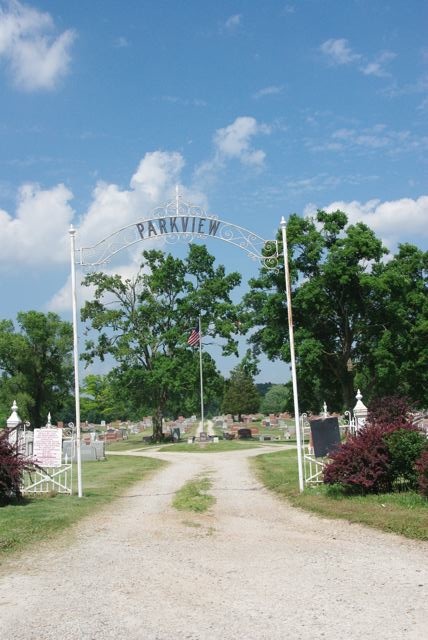
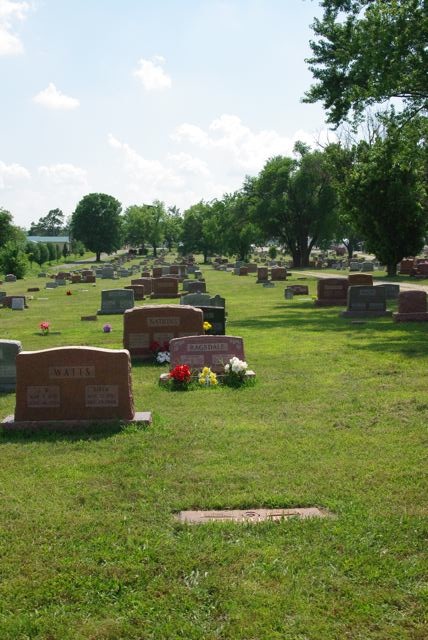
Ketcherside Grave In Foreground Looking Toward Cem. Entrance
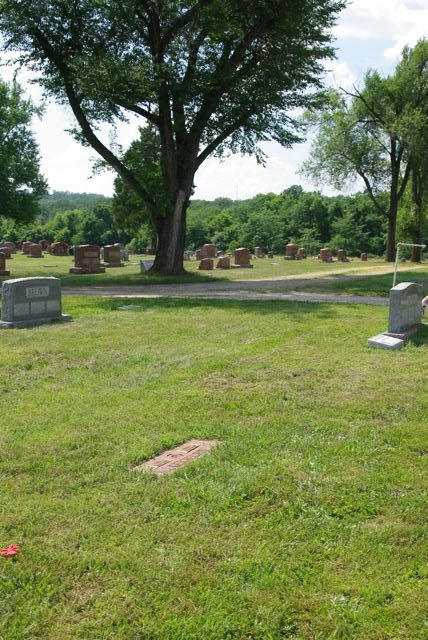
Ketcherside Grave In Foreground Looking Toward
Cnr. Of Second Crossdrive
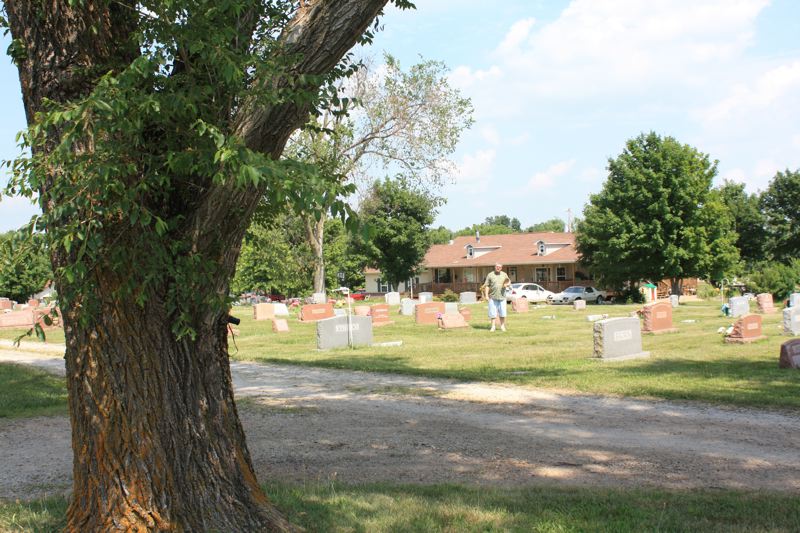
Scott Harp standing at the grave of Carl Ketcherside
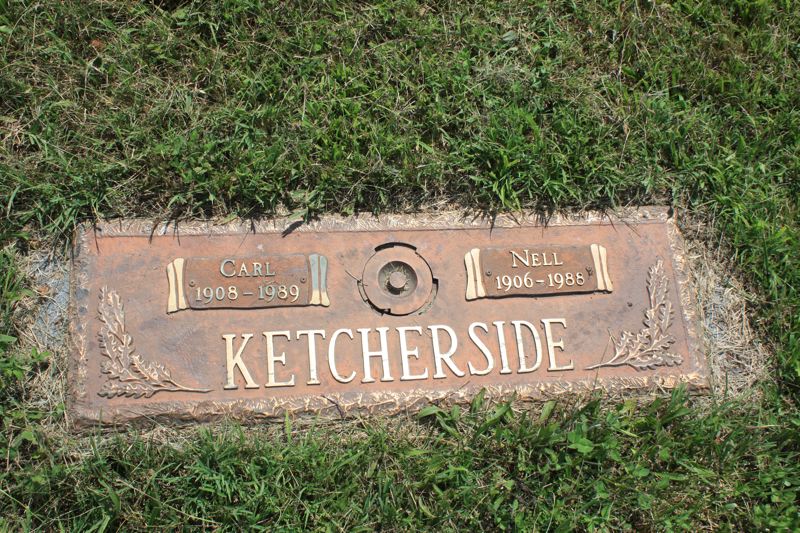
KETCHERSIDE
Carl 1908-1989
Nell 1906-1988
![]()
Special Thanks to C. Wayne Kilpatrick and Tom L. Childers, who traveled with your web editor, Scott Harp, in June 2009 into Missouri, Illinois, and Indiana, to do some research on people connected with the Restoration Movement. The Ketcherside grave was high on the list of priority to visit in view of making this website possible. The photos on this page were taken by all three.
![]()